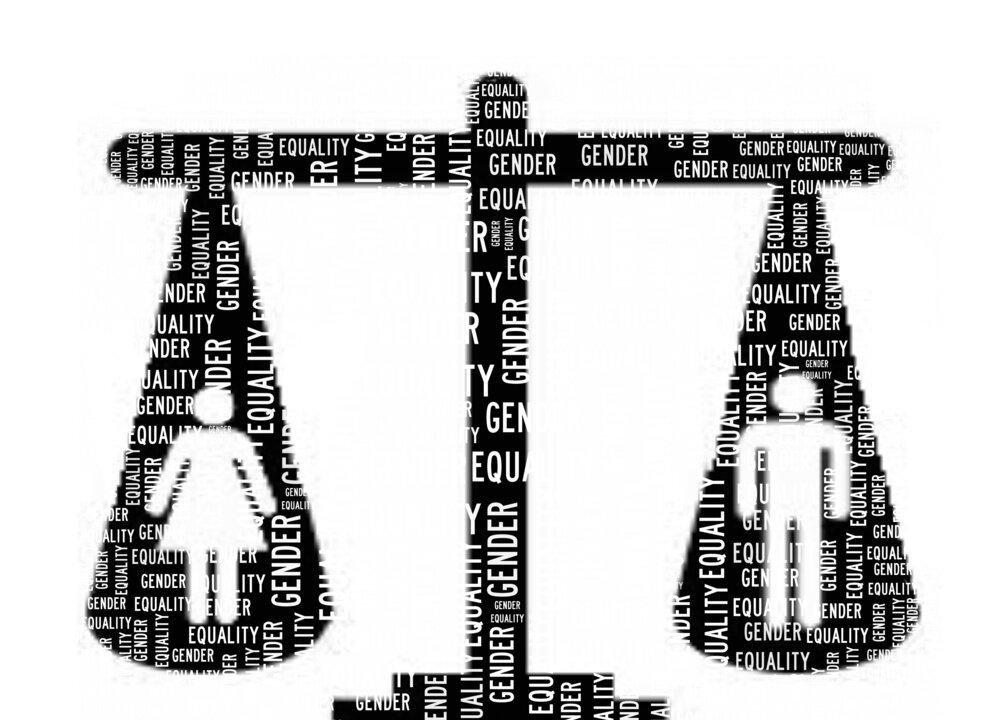WASHINGTON—President Barack Obama and fellow Democrats proclaimed Equal Pay Day earlier this month. Speaking from the White House, the president referred to a frequently mentioned statistic, namely, that women earn 77 cents for one dollar earned by men.
“Today, the average full-time working woman earns just 77 cents for every dollar a man earns; for African American women, Latinas, it’s even less. And in 2014, that’s an embarrassment. It is wrong,” the president said.
April 8 was picked for “Equal Pay Day” because it represents the average additional length of time from the beginning of this year that women would have to work to equal what men earned the previous year.
No one disputes the validity of the number (although the Department of Labor uses a similar amount of 81 cents). The 77 cents, or a gender pay gap of nearly 23 percent comes from 2010 data of the U.S. Census (see page 12). But many opponents of the president say that the statistic is being misinterpreted and politicized.
At the president’s news conference, Obama urged Republicans to prove they care about women and pass the Fair Paycheck Act the next day, which he said would go a long ways towards closing the pay gap.
The Paycheck Fairness Act failed to pass the Senate on April 9 on a procedural vote. While a majority voted in favor of it, not a single Republican senator would support it. The primary reason given by Republicans is that they interpret the statistic in a different way from the president and the Democrats.
Different Choices?
Speaking at the PBS Newshour on April 8, Genevieve Wood, senior contributor to The Foundry, a news and commentary site affiliated with the conservative Heritage Foundation, said:
“Men and women make different choices. Georgetown did a great study that I thought was very interesting. They looked at what majors guys choose when they go to college and what majors women choose. Men tend to outnumber women in the top 10 wage earners, the majors that end up making the most money once you get out of college, in all of the top 10 except for one. Women outnumber men in the bottom set. So, if you want to make a lot of money, go be a petroleum engineer. Those who major in things like visual arts, they make less money. But that’s a choice people make.”
Ariane Hegewisch from the Institute for Women’s Policy Research on the same broadcast responded: “I think it’s an issue of women being more likely to work in lower-paid occupations. The question is whether this is a choice or whether it’s the way jobs are. We need teachers. And to say a teacher ought to be paid—you know, all teachers have to become engineers or IT professionals would be ruin to economy, because we need teachers and teachers need to be well-paid.”
A version of the Fair Paycheck Act was introduced 2012, and advocates on both sides were invited by U.S. News and World Report to debate the merits of the act and the 77 cent statistic from 2010 that is driving the debate.
Diana Furchtgott-Roth, a senior fellow at the Manhattan Institute for Policy Research, said it only makes sense to compare men and women with the same experience in the same job.
“The 77-cent statistic combines men and women who work in different jobs with different numbers of hours. When job experience, and hours of work are taken into account, rigorous economic studies show women make about the same as men—95 cents on a man’s dollar,” she wrote in May 2012.
However, Hegewisch, on the Newshour, said that her Institute “analyzed the 20 most common occupations, and in none of them do women make the same as men.”
“If you take something like financial advisers—and there are studies on this—the women have the same training, they have the same qualifications, but they make less, because there is discrimination in who gets access to the best jobs. She said later that she thought it was an issue of women more likely to work in lower-paid occupations, such as teaching,” Hegewisch said.
Is it a choice or discrimination? Sabrina L. Schaeffer, executive director of the Independent Women’s Forum, saw it as a choice. “Women, and their families, benefit tremendously from a flexible work environment. For instance, some women may choose to accept a lower salary if it means they have the ability to work part-time, flexible hours, or from home,” she wrote in May 2012.
Research on Wage Disparity
The truth probably lies somewhere between the two positions on whether the wage gap is due to priorities freely chosen by women or to sex discrimination. In 2009, the CONSAD Research Corporation, in a report commissioned by the Department of Labor, analyzed the wage gap and claimed it was able to explain most, but not all of the wage gap, which in 2009 was 20.4 percent.
To sum up what they found, a key factor was that women tended to work part-time and part-time work is usually paid less.
Also, a greater percentage of women than men leave the labor force for a variety of reasons, including childbirth, childcare, and caring for aging parents.
Working women tend to favor “family friendly” policies more than men, who favor money.
Occupation and industry was a big factor too. In some industries, the average women’s earnings were higher than men’s, and in some industries, it was less. “In total, industry can account for as much as 38 percent of the raw gender wage gap,” says the CONSAD report.
Still, the report stated it could not explain an adjusted wage gap of about 6 percent. And that is where sex discrimination could be playing a role.
(Scale image via Shutterstock)




